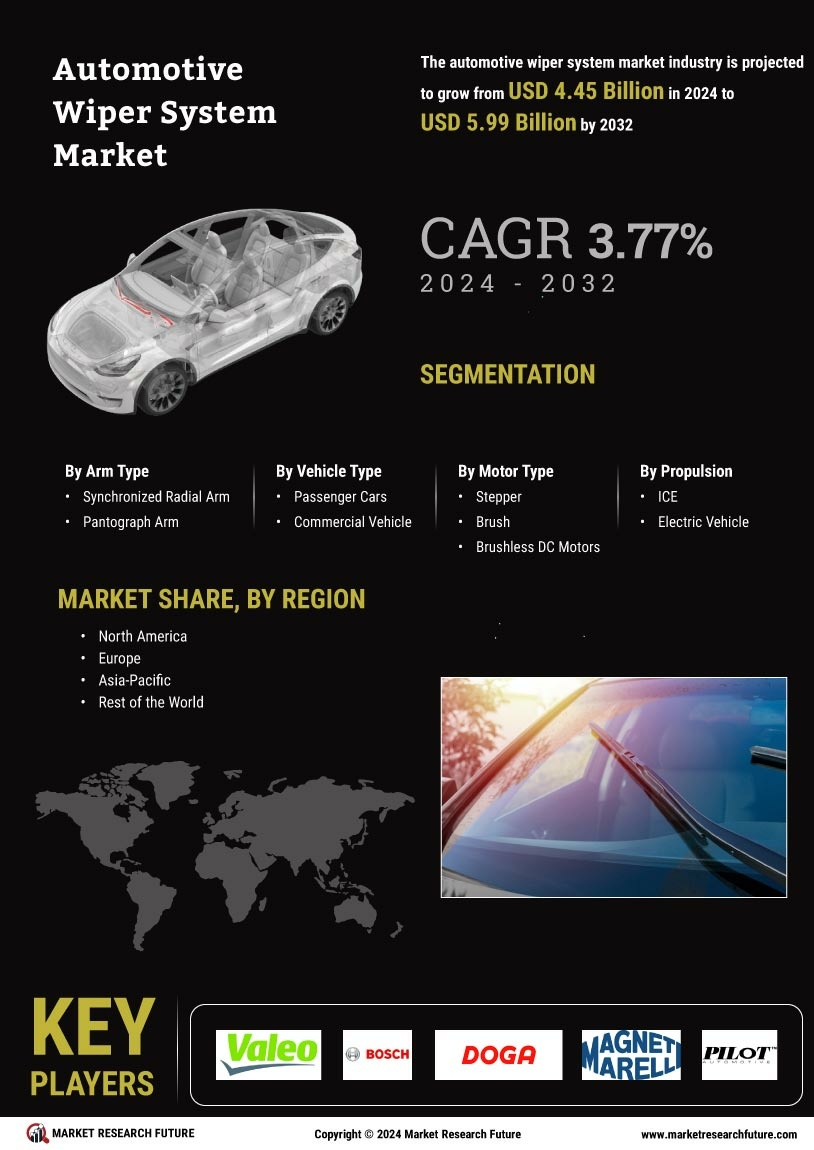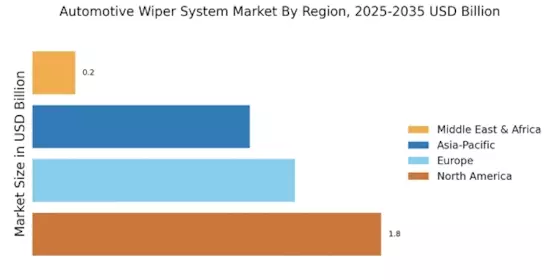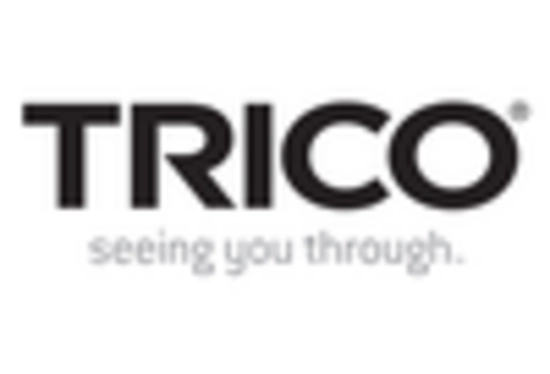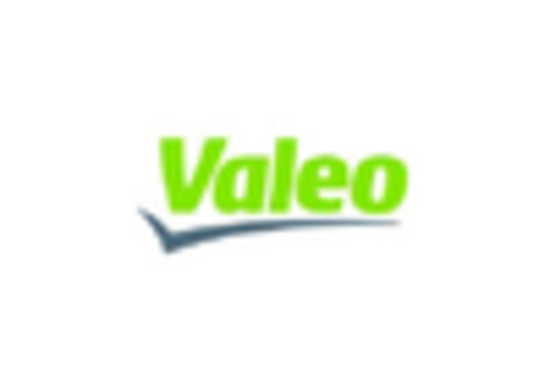Focus on Aesthetic Appeal
The automotive wiper system market is increasingly influenced by the focus on aesthetic appeal in vehicle design. As consumers become more discerning about the appearance of their vehicles, manufacturers are compelled to integrate wiper systems that not only function effectively but also complement the overall design of the vehicle. In 2025, it is anticipated that nearly 50% of new vehicle models will feature wiper systems designed with aesthetics in mind, including sleek designs and innovative placements. This trend indicates a shift towards creating a harmonious balance between functionality and visual appeal, which is likely to drive the demand for advanced wiper systems. As a result, the automotive wiper system market is expected to evolve, with manufacturers prioritizing design elements that enhance both performance and the visual attractiveness of vehicles.
Rising Safety Regulations
The automotive wiper system market is significantly influenced by the rising safety regulations imposed by governments across various regions. These regulations mandate that vehicles must be equipped with effective wiper systems to ensure optimal visibility during adverse weather conditions. As safety becomes a priority for both manufacturers and consumers, the demand for advanced wiper systems that comply with these regulations is likely to increase. In 2025, it is estimated that nearly 70% of new vehicles will feature advanced wiper technologies, such as rain-sensing systems and integrated washer systems, which enhance safety and convenience. This trend not only boosts the automotive wiper system market but also encourages manufacturers to innovate and improve their product offerings to meet stringent safety standards.
Technological Innovations
The automotive wiper system market is witnessing a wave of technological innovations that are transforming traditional wiper systems into advanced, multifunctional components. Innovations such as automatic wiper activation, adaptive wiper systems, and integration with vehicle sensors are becoming increasingly prevalent. In 2025, it is projected that the market for smart wiper systems will grow at a compound annual growth rate of over 8%, driven by consumer demand for enhanced functionality and convenience. These technological advancements not only improve the performance of wiper systems but also contribute to the overall safety and comfort of driving. As manufacturers continue to invest in research and development, the automotive wiper system market is likely to see a proliferation of new products that cater to the evolving needs of consumers.
Growing Aftermarket Segment
The automotive wiper system market is also benefiting from the growth of the aftermarket segment, which is driven by an increasing number of vehicles on the road and the need for replacement parts. As vehicles age, the demand for high-quality wiper blades and systems that can enhance performance becomes more pronounced. In 2025, the aftermarket for automotive wiper systems is expected to account for a significant share of the overall market, with a projected growth rate of around 6%. This trend is further fueled by the rising awareness among consumers regarding the importance of maintaining their vehicles for safety and performance. Consequently, the automotive wiper system market is likely to see a robust expansion in aftermarket sales, as consumers seek reliable and efficient replacement options.
Increasing Vehicle Production
The automotive wiper system market is experiencing a surge in demand due to the increasing production of vehicles worldwide. As manufacturers ramp up their output to meet consumer demand, the need for efficient and reliable wiper systems becomes paramount. In 2025, the total production of passenger cars and commercial vehicles is projected to reach approximately 90 million units, which directly correlates with the growth of the automotive wiper system market. This increase in vehicle production not only drives the demand for wiper systems but also encourages innovation in design and functionality, as manufacturers seek to enhance the overall driving experience. Consequently, the automotive wiper system market is poised for substantial growth as it adapts to the evolving needs of vehicle manufacturers and consumers alike.


















Leave a Comment